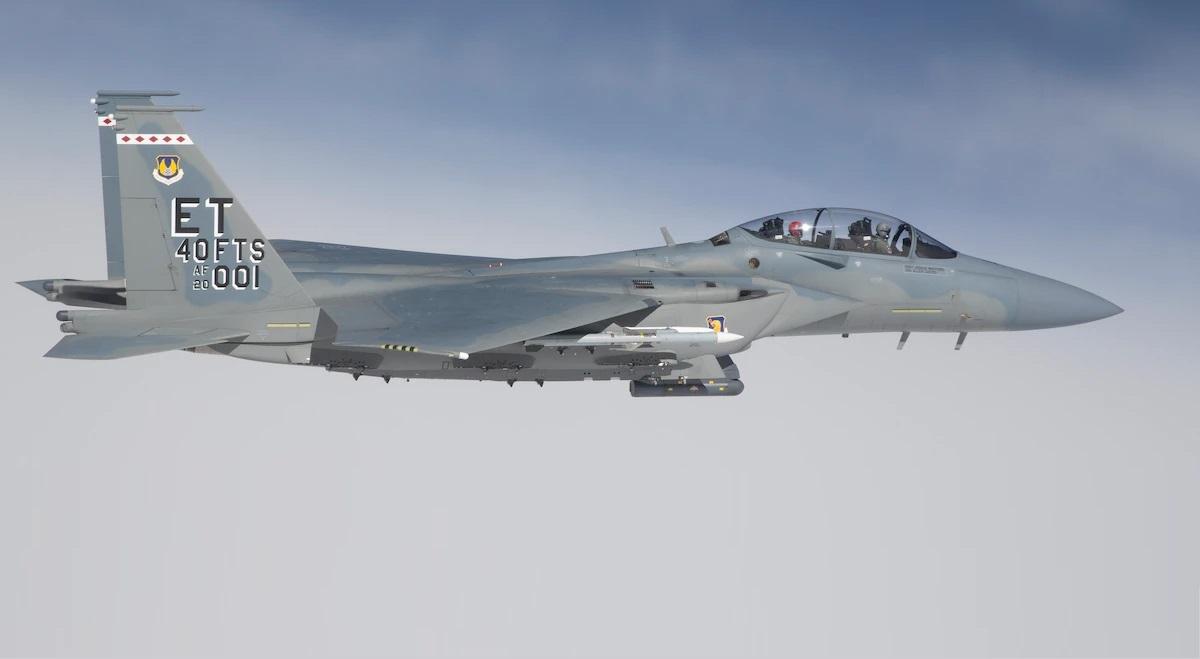Flying over the Gulf of Mexico, the Air Force’s newest fighter, the F-15EX Eagle II, successfully fired an AIM-120D missile January 25. The 40th Flight Test Squadron aircrew and aircraft fired the weapon pursuing a BQM-167 aerial target drone as part of the 53rd Wing’s Combat Archer, an air-to-air weapons system evaluation program. During the flight, the F-15EX detected the drone using onboard sensors, acquired a weapons-quality track and launched the missile at the target. After tracking the missile’s release and flight toward the BQM-167, the shot was determined a WSEP success, at which point the missile flight was terminated.
The successful release marked the first weapon fired from the aircraft and another major milestone following more than six months of integrated developmental and operational flight testing for the shot. Not only was this the first F-15EX live fire, it was also the first missile shot for experimental test pilot Maj. Benjamin Naumann. A large part of Combat Archer is providing first-hand, live fire experience. Many pilots perform their first live fire at WSEP. Along with weather, extra safety precautions and aircraft settings, test aircrew also have to account for and fly at specific test parameters when firing to ensure the appropriate data is collected for analysis.

“This was an end-to-end verification of the entire weapons system, which will pave the way for more complex missile shots in the future. The fact that both aircraft were able to turn around from a streamlined acceptance period and immediately deploy to a major exercise is a testament to the maturity of this platform, as well as the expertise of the combined test team as a whole. For a new platform, we’ve made an incredible amount of progress in a short period of time. I don’t know of any other platform that has undergone such a rapid test program and it’s been incredible to be a part of the team that’s bringing this to reality.,” said Colton Myers, F-15EX test project manager with the Operational Flight Program Combined Test Force.
“I am humbled to have the opportunity to fire the first weapon, but the bigger success is the verification of the F-15EX capability to live-fire a missile. This shot is another important step towards fielding the aircraft to combat units. “Ultimately we’re a part of an iterative development process, validating expected results and providing feedback to the team on successes or things to improve,We act as the liaison to bring combat capabilities to the warfighter” said Maj. Benjamin Naumann, experimental test pilot.

The missile shot is one of many milestones for the F-15EX test team at Eglin Air Force Base. The Eagle II was pushed to its limits in the multi-service exercise and a significant amount of data was collected on the aircraft’s internal performance and how it performed with and against other aircraft. Following the deployment, the F-15EX underwent developmental flight and ground testing to include survivability testing in various electromagnetic environments. This series of tests lead to the discovery of and resolution of issues identified in the F-15EX’s Suite 9 software system, leading to a more mature and stable product.
After the developmental testing, it was time for some operational testing in October. The aircraft deployed to Nellis Air Force Base, Nevada for another exercise focused on the air-to-air dominance mantle it will inherit from the F-15C. This exercise proved that while the platform still needs more development, it is completely capable of fulfilling its expected air dominance role. The advancement of the program and the EX’s successes over the past 10 months are due to the integrated testing efforts by the 96th Test Wing and 53rd WG. The 83rd Fighter Weapons Squadron is responsible for the air-to-air WSEP, a monthly event here.
















